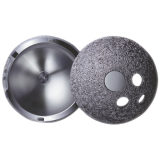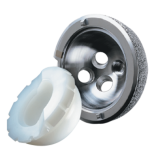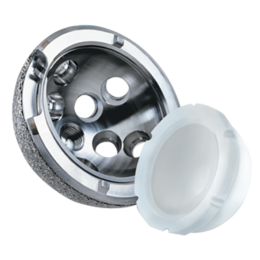Building on Success
The Trilogy Acetabular Hip System builds on the success of the Harris-Galante™ Porous and HGP II Cups by combining proven features with new technology designed to inhibit the formation and migration of polyethylene debris. In doing so, Zimmer has provided multiple defense mechanisms against the poly debris that can be associated with osteolysis.
Clinical History
Ten-year survivorship analysis of Galante’s series of 204 Harris-Galante Cups revealed that the acetabular component had a 99 percent chance of survival with revision or aseptic loosening as the end point. Osteolysis was noted in only 4 percent of cases.1
In a series of 264 Harris-Galante Cups implanted by eight surgeons, Bohm and Boshche reported that no acetabular components had been revised for aseptic loosening and there was no evidence of pelvic osteolysis at 11 years follow-up. The cumulative survival rate with removal as the end point was 98 percent.2
Options for Patient Fit and Surgeon Preference
Available in a complete size range and a variety of shell configurations and liner options, the Trilogy System offers surgeons ample scope to meet both the primary and revision needs of their patients while accommodating their surgical preference.
Removable Longevity Highly Crosslinked liners are available in standard, 10 degree, and 20 degree elevations, 7mm offset, oblique, and eccentric options. Additionally, large head liners are available up to size 40mm ID. This offers a range of options to assist the surgeon in optimizing femoral head coverage and restoring proper hip kinematics. The liners are designed to minimize wear by achieving maximum congruency and optimized poly thickness without compromising range of motion and metal shell thickness.
Product Brochure
References
- Clohisy JC, Harris WH. Primary hybrid total hip replacement at ten-year follow-up. Presented at the Harvard Hip Course, September 1997.
- Callaghan JJ, Gooma GS, Olejiniczak JP, et al. Primary total hip arthroplasty: an interim follow-up. Clin Orth Rel Res.








